By Duncan Bayliss, Wrekin Orienteers
Can you really do orienteering from your sofa? Well, during the current shut down of orienteering in the UK there is some good news that there is a surprising amount of orienteering fun to be had online. There are several orienteering games you can purchase such as Virtual O featured in this video clip with Simone Niggli, and there is a wealth of other free orienteering fun to be had too.
Simone Niggli playing Virtual O link to video: https://youtu.be/ERtiH-p3MIs
Free Orienteering Fun Online
Orienteering calls itself the “Thought Sport” and it really is true. Knowledge, experience and skills development do count for a lot. We have had a number of notable orienteers in the UK who even as they got older kept beating much faster and younger competitors. It means that it is always worth working on the thinking part of the sport and Trail-O has shown that there is great challenge in navigation and map reading independent of running speed. Fortunately, there are many ways you can do some orienteering practice without stepping outdoors.
When compiling material for the orienteering skills website Better Orienteering, I was surprised to find how much there is to enjoy online, I hadn’t paid much attention to it before. You can while away many absorbing hours on activities that develop your skills or are just fun.
There are a series of convenient links on Better Orienteering under the websites and resources section that can take you to some here.
Planning routes on World of O - Route to Christmas series and Route to O - Season 2020
This is my favourite free online orienteering activity.
The Route to Christmas series has been running for some years and is a great way to practice route planning. Once I started, I was hooked and ended up working through all the back catalogue of routes from previous years. Legs from great courses throughout the year are made available in a series in December to “solve”. There is also currently a Route to O - Season 2020 series too.
You get to see the leg without any routes on first then can add your own route if you wish, and finally you can see where actual competitors. There is analysis of where they gained and where they lost time. It’s a great way to learn from the best. The series include a selection of legs from forest and urban races to work on. If you Google Route to Christmas 2018 (or 2014) it will take you into the vast World of O website.
We have had many family debates about the relative merits of routes and whether we would be actually be able to follow them. Sometimes I’ve looked at a leg and it feels like an age as I work out how on earth would I tackle it.
Jan Kocbach has done an amazing job with World of O and there is much more to explore there, I get lost in it for hours. The ongoing route analysis of World Cup races is fascinating too. Find out more here.
The link to the World of O Route to Christmas example shown below can be found here.
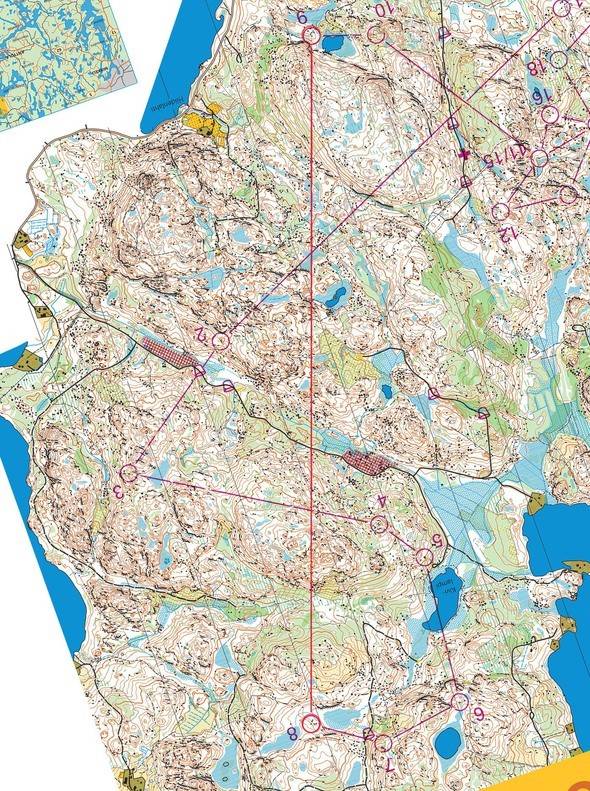
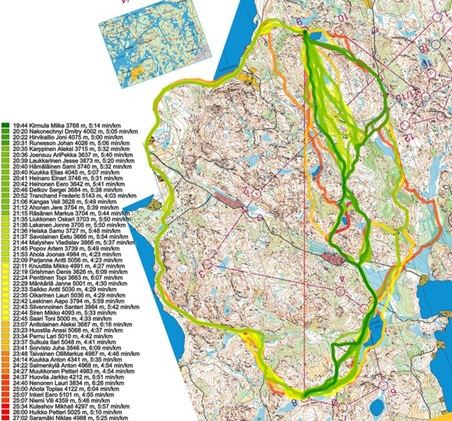
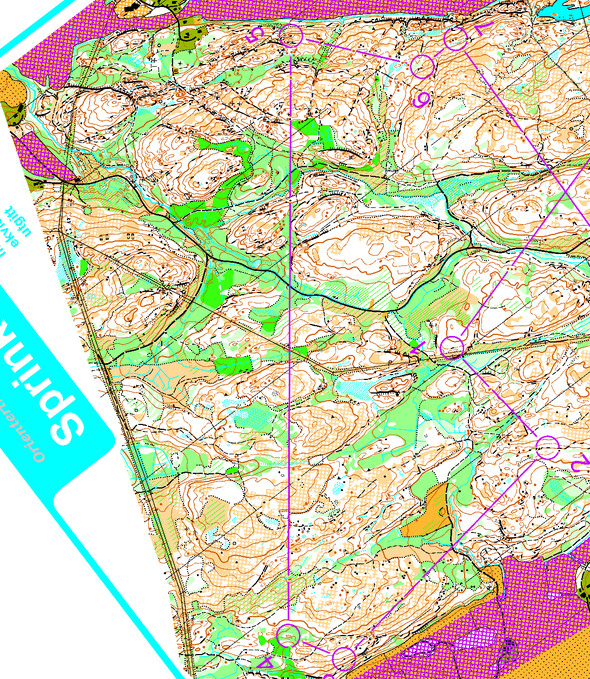
The link to the World of O map of Day 1 Route to O-Season 2020 can be found here.
The link to the Route to O-Season 2020 series Day 1 webpage is available here.
Headcam videos
Try a virtual run with an elite/ good orienteer. Headcam videos of elite competitors can give an interesting insight into the process of orienteering at a high level. You can follow the route on the map as well as seeing the video of the terrain from the runner’s perspective.
Here is just one example. Ivan Sirakov has posted a series of Head Cam videos with map inserts, on terrain around the world, in a series called ‘Analyse my Orienteering’.
Link to video here.
If you really want to do the full simulation, you can potentially find a map and course on World of O maps first here.
You could “solve” the route choices, then watch a competitor’s video for how they did it and re-evaluate your routes and / or skills and think about your ability to follow those routes you so confidently planned when just looking at the map!
Orienteering games and simulators
These have been featured in the British Orienteering press before but are well worth a look if you don’t know them.
The Forest (free)
Probably the hardest but most important skill in orienteering is visualisation. The map needs to become a 3D reality in your mind. The Forest, developed by Graham Relf, a UK orienteer, is a way to practice this and develop your ability to see the shape of the land from the map in front of you. The Forest is free and does not require installation, it runs in your browser (PC, Android, Linux). There are novice and expert versions of courses and you can plan and send a course to friends. See the User guide. There is also a treasure hunt available when in Explorer mode.
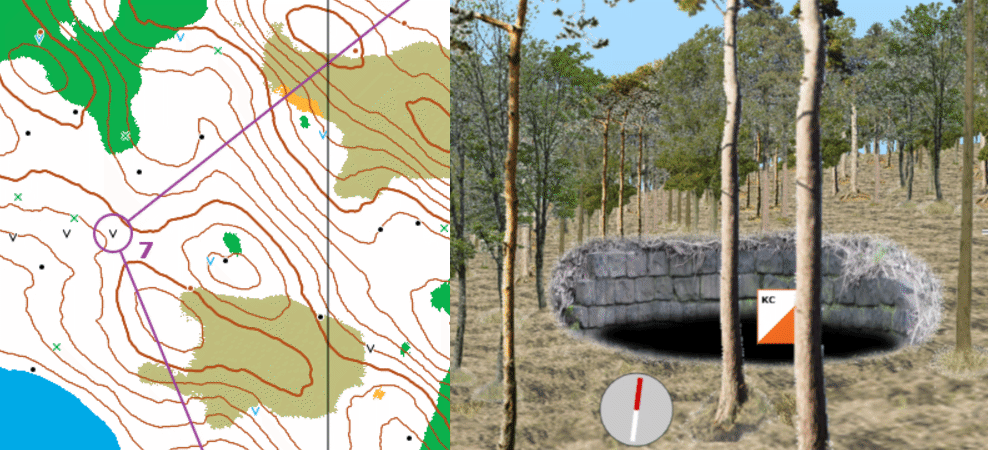
The game can be found here.
Graham has recently put a lot of work into improving the visualisations in The Forest. As you learn the type of terrain that The Forest features, you become much better at visualising it from a map extract. This mirrors what happens in reality, where the better we know a certain type of terrain, say complex fells in the Lake District, the easier it becomes to “see” in our minds what the map is showing. Multiple World Champion Thierry Gueorgious’ father, Michel, calls this a Terrain Library that we build from our experience of orienteering in different types of terrain. The Forest illustrates that learning process very well.
There are several orienteering games you can purchase. Some have a free demo online. The two suggestions here are not in any order of recommendation. Both have been around a while, and both have been updating their digital landscapes. Just as with real orienteering, don’t expect instant success. The courses take a long time to work around just like real courses and when you get lost, you truly get lost!
Virtual O (game to purchase)
Virtual O is an orienteering simulation game. The video link at the start of this article shows Simone Niggli playing it and captures the sense of total immersion in the terrain as though you were really sitting in the forest. Clearly playing a game is not the same as really being outside, but the digital landscapes have come on a long way with realistic rendering from the maps. It can take a while to get the hang of using the interface, but the quickest competitors are impressive. The game is for purchase, but the demo video gives a good idea of what it entails.
The Virtual O demo page can be viewed below.
Catching Features (free demo then game to purchase)
Many orienteers have tried Catching features at some point. If you haven’t tried it, it’s worth a go. You can try a course on the free demo version to see if it works for you. The representations of terrain have moved on a lot from when such games first started. Unlike most fast-paced computer games it requires a steadier approach and there is a fair learning curve at first to work how best to interact with the courses. There’s a huge number of players already. You get to practice route choice and map reading without going out.
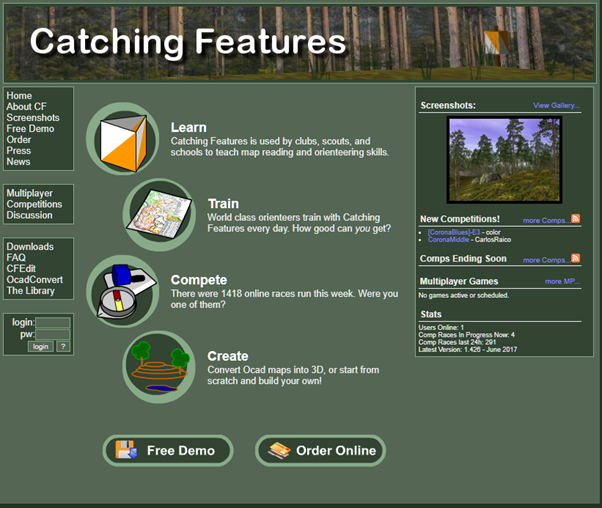
This free demo gives a good flavour and can be found here.
Other orienteering activities
Build Your Skills
You can of course use some down time to review your skills and work out what you might be able to improve on. Orienteering is a never-ending learning process. There are lots of suggestions and resources on the Better Orienteering website here.
If you prefer to learn by watching videos, here are two playlists.
- The first is great learning videos. Many British orienteers will have seen these, but if you haven’t, they are worth a look. These are available to watch here.
- The second list is just some great orienteering videos from around the world to inspire you and keep your hope up! Of course, these videos will lead you on to many more on YouTube. You can watch these videos here.
These video links can also be a great way to try to get friends hooked on the idea of trying orienteering.
Make A Map – Open Orienteering Map
If you have never tried using Open Orienteering Map by Ollie O’Brien it’s a diverting way to make training courses. Why not plan a club training session and some simple courses for when we are allowed back out into the great outdoors?
The Open Orienteering Map, the easy Street-O map creation tool can be found here.
Click on the little pen icon to edit text boxes. Maps are exported as pdfs.
You can then import your pdf to PurplePen (which is free to download) and add courses for when orienteering returns. Remember of course that land permissions are still needed.
Have fun orienteering online!
Latest News

Elite Training Opportunities
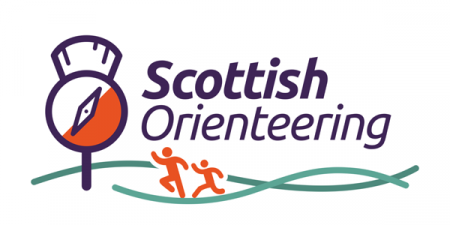
Job opportunity: Coordinator required for the Scottish Elite and Development Squad (SEDS)
